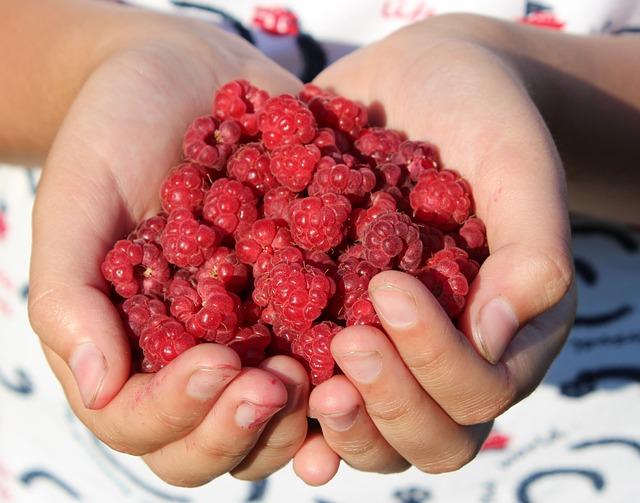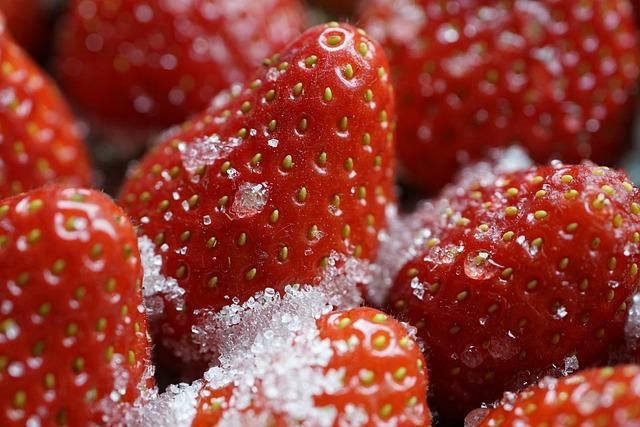Sugar-Free Jello: Diet-Friendly Dessert or Chemical Cocktail?
Hey there, dessert lovers! Are you a fan of indulging in a sweet treat but watching your waistline at the same time? Sugar-Free Jello might seem like the perfect guilt-free option, but is it really as healthy as it seems? In this article, we’ll dive into the world of sugar-free gelatin desserts to uncover whether they’re truly diet-friendly or just a sneaky chemical cocktail in disguise. Let’s dig in!
Contents
- Is Sugar-Free Jello a Healthier Choice for Dessert?
- Health Benefits and Drawbacks of Sugar-Free Jello
- How to Incorporate Sugar-Free Jello into a Balanced Diet
- Exploring the Controversy: Are Artificial Sweeteners Safe?
- Balancing Taste and Nutrition in Sugar-Free Jello Desserts
- The Role of Sugar-Free Jello in a Weight Loss Plan
- To Wrap It Up
Is Sugar-Free Jello a Healthier Choice for Dessert?
Sugar-free Jello has gained popularity as a guilt-free dessert option for those looking to satisfy their sweet tooth without the added calories and sugar. However, the question remains – is sugar-free Jello truly a healthier choice or just a chemical cocktail in disguise?
While sugar-free Jello may seem like a diet-friendly option, it’s important to consider the ingredients that go into making it. **Some key points to keep in mind include:**
- The use of artificial sweeteners such as aspartame or sucralose
- Potentially harmful additives and preservatives
- Lack of nutritional value compared to naturally sweetened desserts
Ultimately, the decision to include sugar-free Jello in your diet comes down to personal preference and health goals. While it can be a tasty treat in moderation, it’s essential to be mindful of the potential risks associated with consuming artificial ingredients on a regular basis.

Health Benefits and Drawbacks of Sugar-Free Jello
When it comes to sugar-free Jello, opinions are divided on whether it is a diet-friendly dessert option or a questionable concoction of chemicals. Let’s take a closer look at the health benefits and drawbacks of this popular treat.
Health Benefits:
- Low in calories: Sugar-free Jello is a low-calorie dessert option, making it suitable for those looking to manage their weight.
- Diabetic-friendly: Since it is sugar-free, Jello can be a good choice for individuals with diabetes who need to monitor their sugar intake.
- Hydration: Jello is made mostly of water, which can help contribute to your daily fluid intake.
Drawbacks:
- Artificial sweeteners: Sugar-free Jello is sweetened with artificial sweeteners, which some people may prefer to avoid due to potential health concerns.
- Lack of nutrients: While low in calories, sugar-free Jello does not provide any significant nutrients, so it should not be relied upon as a source of nutrition.
- Potential digestive issues: Some individuals may experience bloating or digestive discomfort from consuming artificial sweeteners found in sugar-free Jello.
How to Incorporate Sugar-Free Jello into a Balanced Diet
One way to incorporate sugar-free Jello into a balanced diet is by using it as a low-calorie dessert option. With only 10 calories per serving, sugar-free Jello can satisfy your sweet tooth without derailing your diet goals. Additionally, it can be a great alternative to higher calorie and sugar-laden desserts.
Another way to enjoy sugar-free Jello in a balanced diet is by adding fruits or nuts to enhance the nutritional value. You can create a colorful and nutrient-rich dessert by mixing in fresh berries, sliced bananas, or chopped nuts. This will not only add flavor and texture but also provide added vitamins, minerals, and antioxidants to your treat.
Lastly, incorporating sugar-free Jello into your diet can help you stay hydrated. With its high water content, Jello can contribute to your daily fluid intake and keep you feeling full and satisfied. Just make sure to choose sugar-free options to avoid unnecessary added sugars and calories in your diet.
Exploring the Controversy: Are Artificial Sweeteners Safe?
Artificial sweeteners have been a topic of heated debate in the health and wellness community for years. On one hand, they offer a low-calorie alternative to sugar, making them a popular choice for those looking to cut back on their sugar intake. On the other hand, some studies have raised concerns about the potential health risks associated with consuming artificial sweeteners.
One of the most commonly used artificial sweeteners is aspartame, which is found in many sugar-free products, including Sugar-Free Jello. While the FDA has deemed aspartame safe for consumption, some critics argue that long-term use may have negative effects on health. It’s important to note that individual responses to artificial sweeteners can vary, so it’s always a good idea to listen to your body and consult with a healthcare professional if you have concerns.
When it comes to enjoying a guilt-free dessert like Sugar-Free Jello, it ultimately comes down to personal preference and moderation. If you choose to include artificial sweeteners in your diet, be sure to do so mindfully and pay attention to how your body responds. And remember, there are plenty of natural sweeteners like stevia and monk fruit that can be used as alternatives if you prefer to steer clear of artificial ingredients.

Balancing Taste and Nutrition in Sugar-Free Jello Desserts
When it comes to sugar-free Jello desserts, there is often a debate between balancing taste and nutrition. While these desserts may seem like a diet-friendly option, some question the long list of artificial ingredients and chemicals used to create that sweet, gelatinous treat. How do we navigate the fine line between indulging in a guilt-free dessert and consuming a chemical cocktail?
One way to ensure you are getting the best of both worlds is to make sugar-free Jello desserts at home. By using natural sweeteners like stevia or monk fruit, you can avoid the artificial sweeteners found in many store-bought options. Additionally, incorporating fresh fruits or unsweetened coconut milk can add flavor and nutrition without sacrificing taste.
Another key aspect to consider is the nutritional content of sugar-free Jello desserts. While they may be low in calories and sugar, they can also lack important nutrients. To boost the nutritional value, consider adding protein-rich Greek yogurt or chia seeds for a healthy dose of fiber. By being mindful of the ingredients you use and striking a balance between taste and nutrition, you can enjoy a delicious sugar-free Jello dessert without any guilt.

The Role of Sugar-Free Jello in a Weight Loss Plan
Sugar-free Jello has gained popularity among those looking to satisfy their sweet tooth without derailing their weight loss goals. But is this gelatinous treat truly a diet-friendly dessert or just a chemical cocktail masquerading as a low-calorie option?
With minimal calories and zero sugar, sugar-free Jello can be a guilt-free indulgence for those watching their waistline. Its low-calorie content makes it a great alternative to traditional high-sugar desserts, helping to satisfy cravings without sabotaging weight loss efforts. Plus, it’s easy to prepare and can be a convenient grab-and-go snack for those on the move.
To Wrap It Up
In conclusion, Sugar-Free Jello can be a convenient and guilt-free dessert option for those looking to reduce their sugar intake. However, it’s important to be mindful of the artificial ingredients and sweeteners it contains. While enjoying this treat in moderation may not pose serious health risks, it’s always best to opt for whole, natural foods whenever possible. Remember to always read the label and make informed choices when it comes to your diet. Stay informed, stay healthy, and enjoy your desserts responsibly!






